See History of Kelty Spectra Backpacks for lots of information and pictures about the Kelty spectra packs. The Kelty spectra packs are likely the most durable packs ever made. All of the stitching is done with Kevlar thread, which is far stronger and abrasion resistant than nylon thread. (On my McHale spectra pack some of the stitching is in spectra, but most is in nylon.) In addition, the shoulder straps and waist strap is made with spectra fabric. Most spectra packs don't have spectra shoulder and waist straps. Most of the things sewn to the pack, such as the daisy chains and mounting points for straps are made of spectra, which I have never seen in any other line of packs. Even the internal frame parts (except the pad) are made of spectra fabric. This pack will survive a tremendous amount of abuse compared to any other pack. I have three Kelty Cloud 6500 packs. All of them are slightly different from the others. Three of them have red trim, and the fourth has green trim, and I suspect it to be the newest (it is now sold). All of them have removable side pockets, a removable rear shovel pocket, and a removable, adjustable hip belt. The hip belt is secured to the pack with velcro and can be moved up or down a total of 2 inches, to allow for different back lengths. In addition to the heavily padded hip belt, a plain webbing help belt is available to reduce weight. I now have a buncha pictures of the green pack. I will take pictures of the other packs real soon now... |
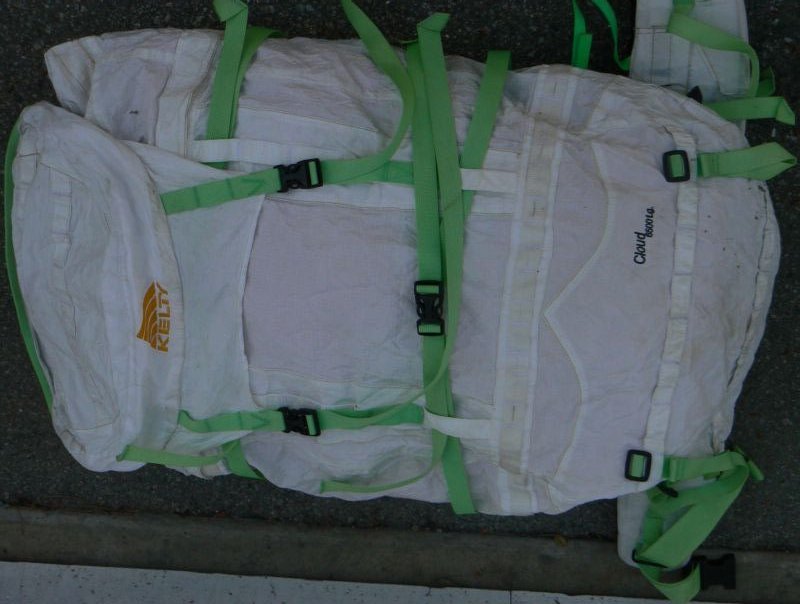
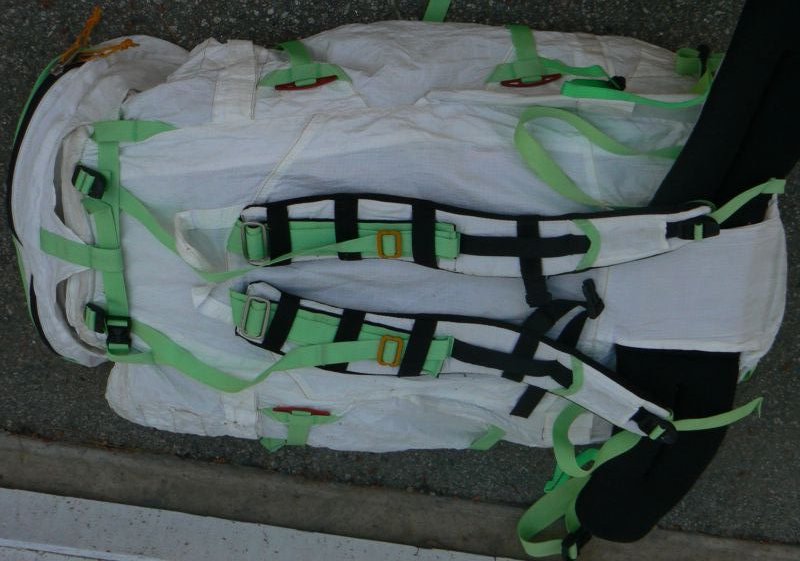
Here are exterior pictures of the pack. All the trim is in green for this pack. The shovel pocket, side pockets and gear loops are pictured way below.
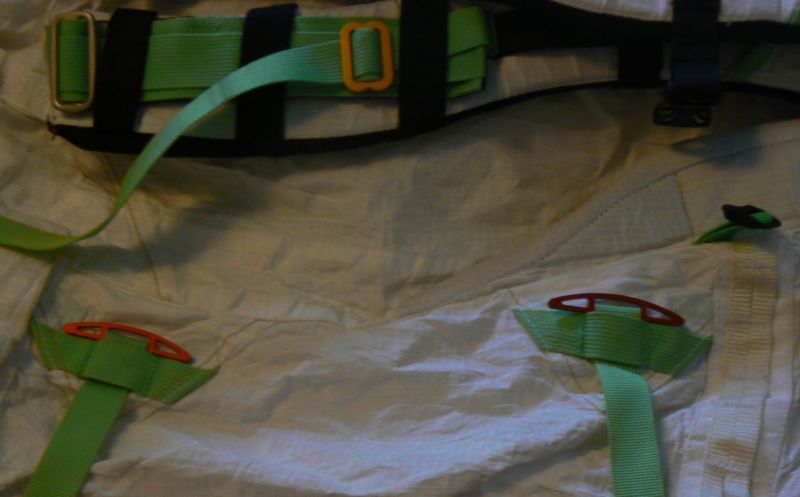
This pack has two compression strap which go from one side of the pack to the other side of the pack. These compression straps end in a loop sewn to a red curved piece of aluminum, as can be seen in the picture above. This is how the new 5250 pack works. For the green pack, the side and rear pocket attach via four solid plastic rods that are about 2 inches long and sewn into the corners of each pocket. These rods go into loops sewn to the pack. See the next picture for a close up of the rod and how it is attached to a pocket. My three red trimmed cloud 6500 packs have three compression straps which go from one side of the pack to the other side of the pack. They secure via 'slic-clips', which are like fastex clips secure to fabric loops, though they can be removed without breaking anything. I am not sure if the pockets can be attached at the same time as the compression straps in the case of the three compression strap packs.
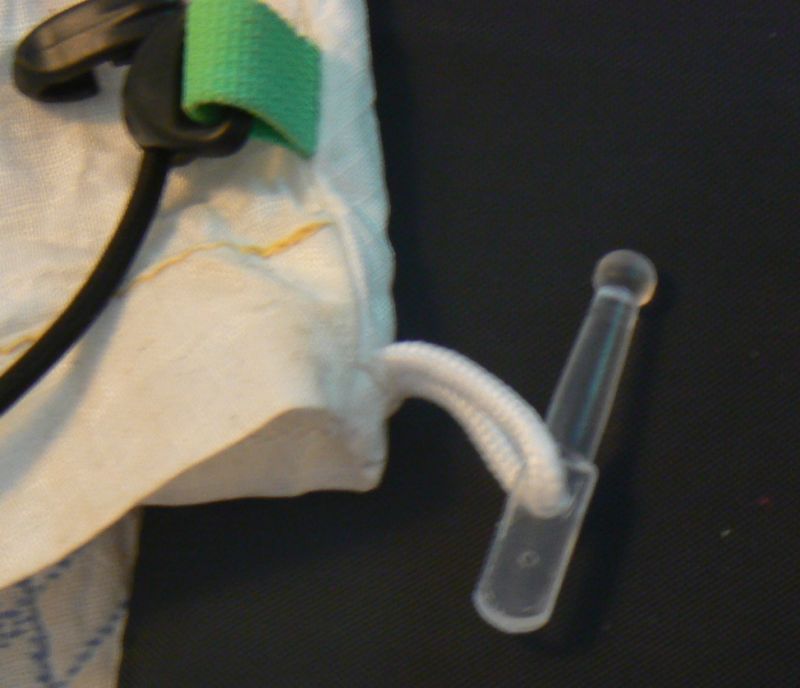
Here is a close up of the rods used on the removable pockets.
On my McHale pack, there are three compression straps and the external pockets don't interfere with the compression straps. I don't think either of Kelty's compression straps and pockets is a real good idea. I think there should be three or four compression straps per side, not for the whole pack. Clearly the straps need to work with or without the accessory pockets being present. I have never seen a pack before with a compression strap that goes all around the back. For a pack as big as the 6500, two straps seems inadequate. My TNF voyager pack is 2700ci and has two compression straps per side, so does my TNF polar circus 2400ci pack.
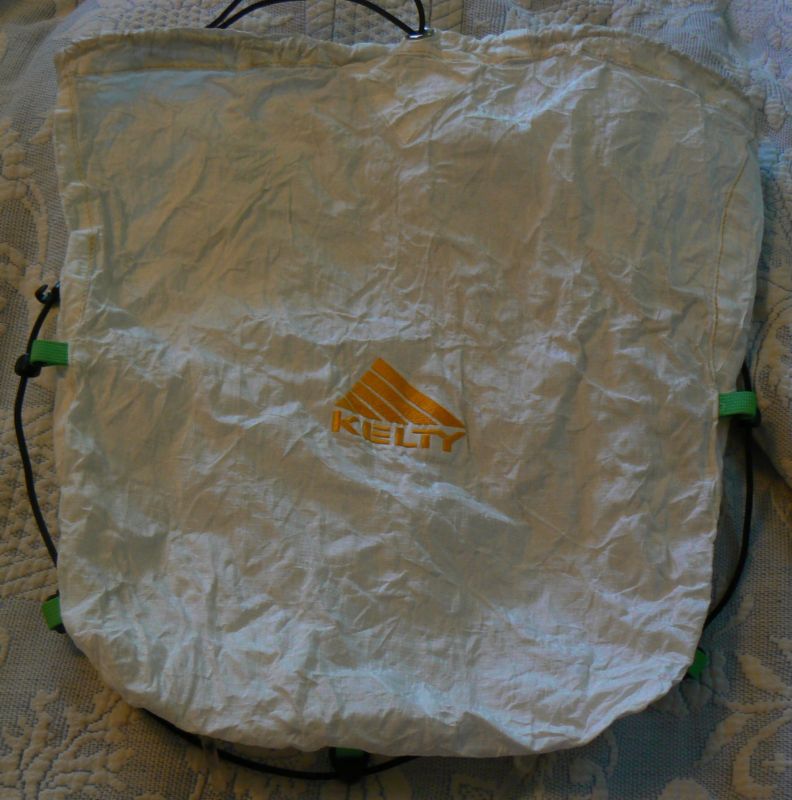
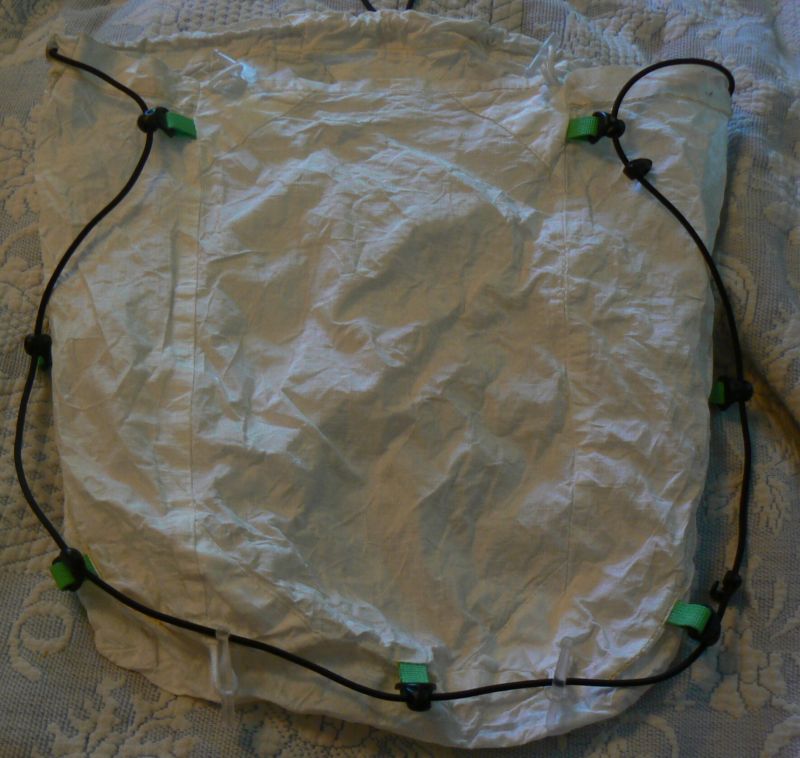
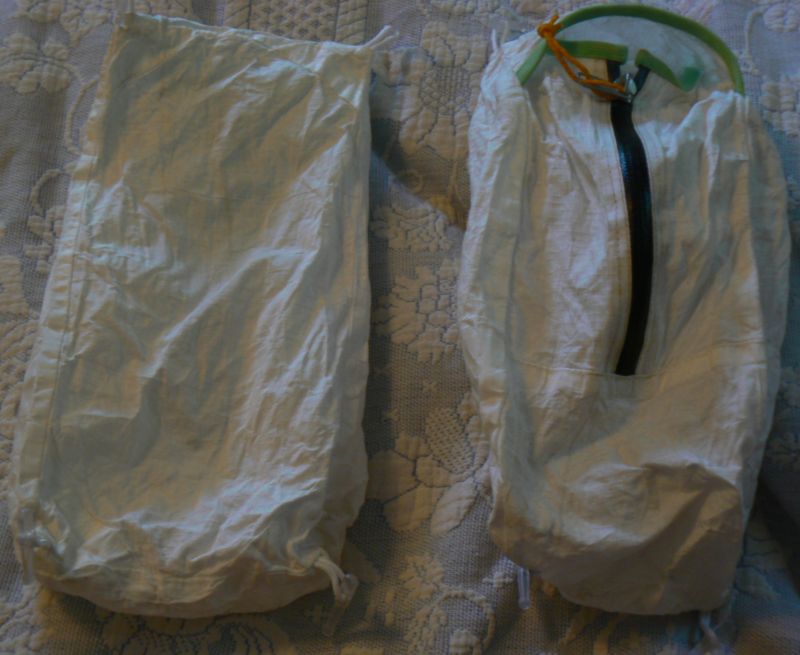
Here are pictures of the shovel pocket. It is big enough for a decent sized snow shovel blade (roughly 12 inches by 12 inches. You could also put other things in it. It has an elastic cord that goes on the back to secure wet clothing or other stuff outside the pack. It has a drawstring on top to secure interior items. The last picture is the side pockets. The zipper is a nice one with the urethane seal on the outside to keep water out. What is quite odd is that the zipper doesn't seal the pocket; there is an air gap above it. It is shielded from some rain by a flap, but won't keep heavy rain out. I find it quite odd, as small items might fall out of the pocket even if it is fully zipped. I don't understand why it is this way, and I would make the pocket fully close if I were making it.
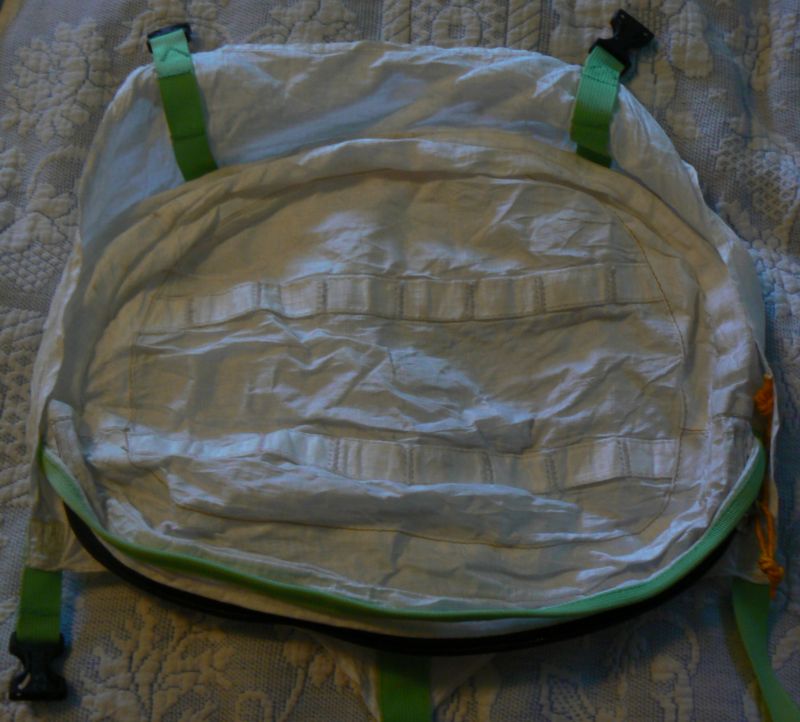
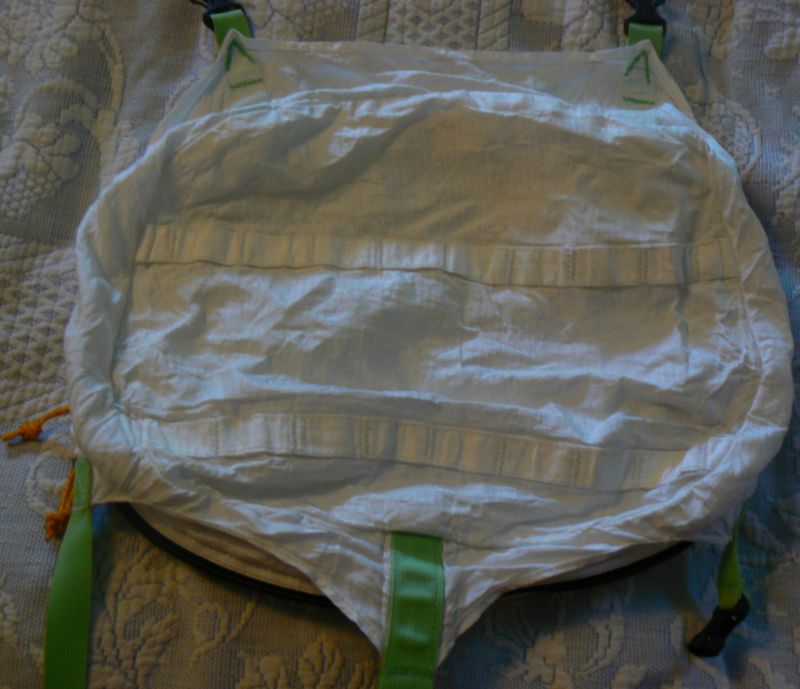
The first picture is of the top of the lid. You can see two spectra daisy chains going from side to side. The zipper to access the compartment is at the rear. The two buckles in the front secure the lid to the main bag. The red packs only have one strap to secure the lid to the main pack. There seems to be no obvious advantage to either arrangement. The buckle, loop, and strap with matching buckle attach to the rear of the pack via sewn loops in the green webbing, and the buckle clips from one side to the other side. All the cloud packs attach the top compartment this way. It is a simple, light, robust mechanism, however there is limited room to adjust the lid upward for large loads. I think there in enough adjustability for the height of the pack extension skirt. The next picture shows the bottom of the lid. It also has two spectra daisy chains going from side to side. I am not sure of their purpose.
There is a big top section of the pack which has a single compartment, unlike most top sections of packs I am familiar with. I think it would be an improvement if it were divided. It comes off, but doesn't make a hip pack like the current 5250 pack top. There is no internal place for a hydration pack unlike the current 5250 pack.
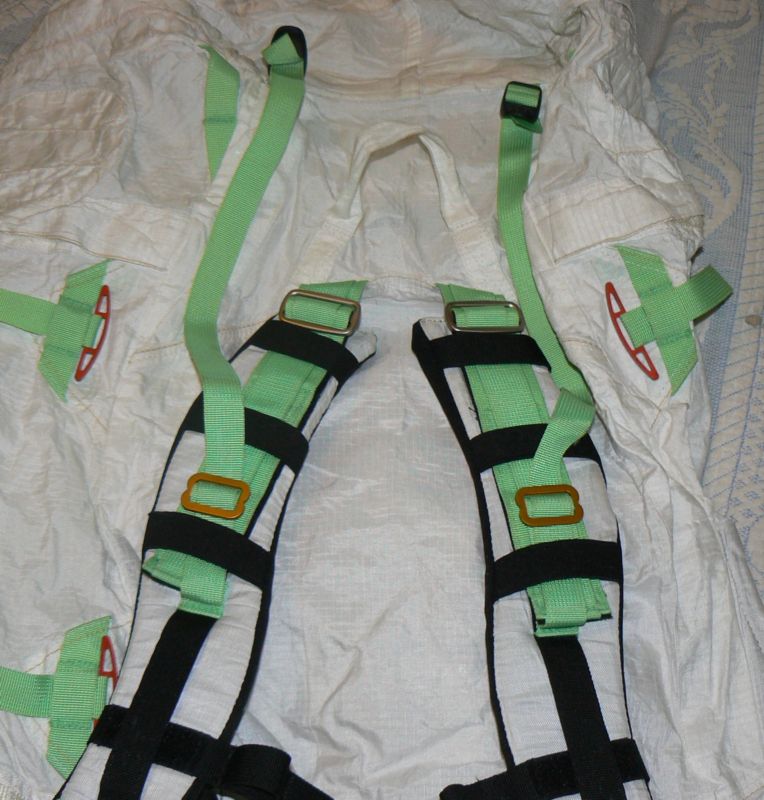
The green pack has removable shoulder straps that are secured with velcro. The velcro goes through metal double D rings sewn to the pack. There are two straps that go from the upper pack to the shoulder straps for helping move the top of the pack closer to your body. There is a sternum strap. The haul loop is made out of spectra fabric.
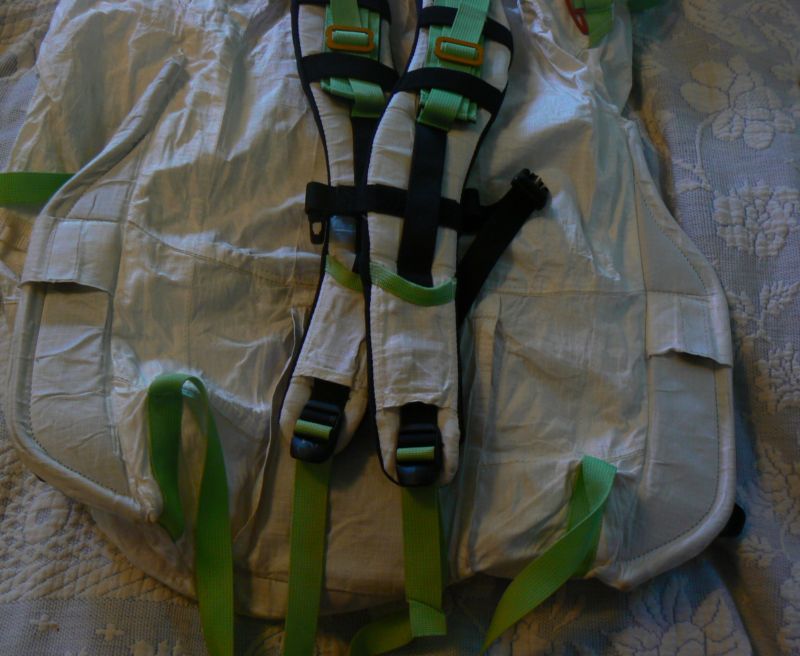
The green pack has two 'wings', that is bent metal reinforcements sewn into the lower area of the pack near the hip belt. The wings have a small pocket with velcro inside of it. The hip belt also has a small pocket with velcro inside it. I am pretty sure this is for the Kelty 'levitators', which are carbon fiber springs that attach to each side of the hip belt and are supposed to help with large loads. The carbon fiber springs are enclosed in fabric and there is velcro to mate with the pack and waist belt velcro. I saw these levitators available first for the the 5250 pack which makes me think the green 6500 pack is of a slightly newer design than the red 6500 packs.
The hip belt is normal looking, except for the levitator pockets and the pockets that accept the gear loops.
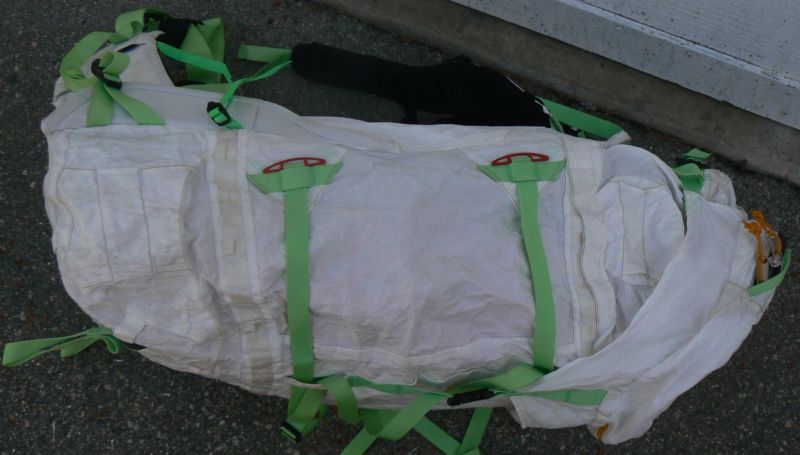
Here is a side view of the pack. Note at the top and bottom of the pack the reinforcement areas where the gear loops can be attached. The mounting points are quite robust.
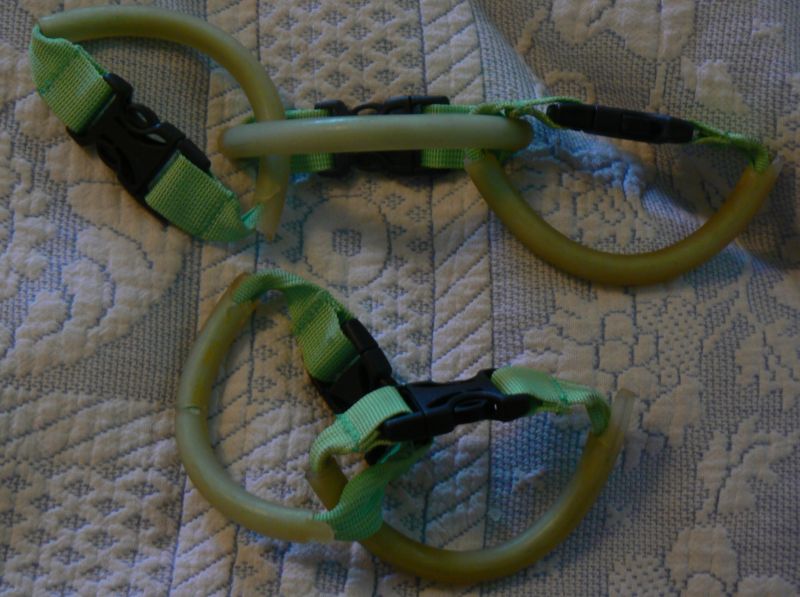
You can attach gear loops to a variety of places on the pack as well as the hip belt. This pack has five 'gear loops', which are made out of folded webbing with a clear plastic tube around the webbing. As the plastic ages, it becomes less clear and less flexible. Some have broken with age. They are often used for holding rock climbing gear, though it seems odd to do technical climbing while wearing the pack. You can clearly see how the plastic has become less clear and has broken in several places. I removed all the gear loops, as I don't have any use for them.

The frame is a critical part of the pack. It transfers the weight from the shoulders to the waist area. It is the backbone of the pack. The kelty frame is made mostly of aluminum. The aluminum isn't flat stock, but rather it is corrugated to be lighter than flat stock of similar outline, and stiffer than flat stock of the same weight. Kelty calls the aluminum LightBeam, which is an appropriate name. The above picture shows both sides of a piece of Kelty LightBeam.
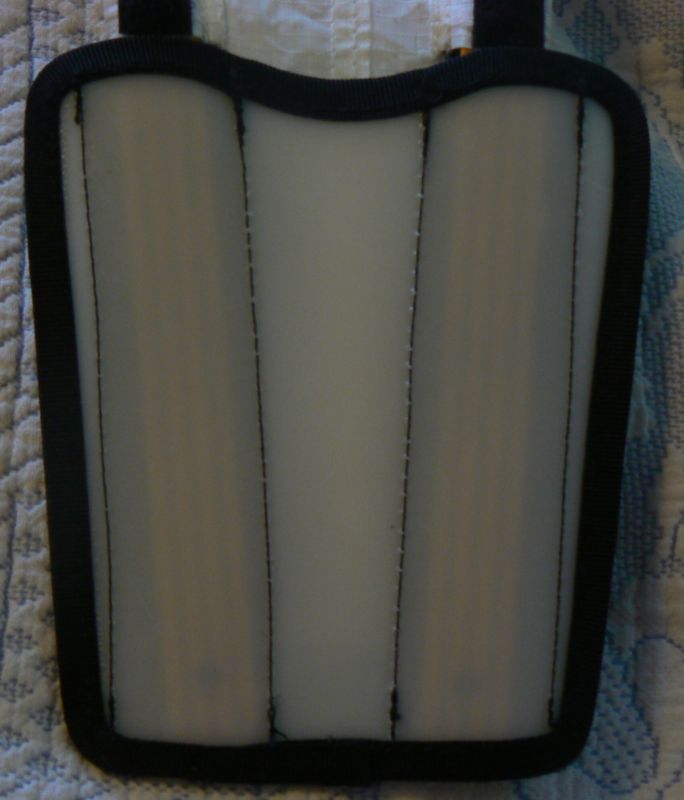
The frame consists of two stays of stays of aluminum, and fabric and HDPE plastic sheet which holds them in place. The first picture shows the bottom of the frame. The HDPE has pockets which secure the ends of the aluminum. You can see the gold colored aluminum through the HDPE. This end fits into a pocket in the bottom of the pack, next to the waist belt.

There is a spectra fabric assembly that the stays side into. There is a metal bar sewn into the top of the fabric assembly. The bottom of the fabric has velcro which secures it to the bottom piece of HDPE.
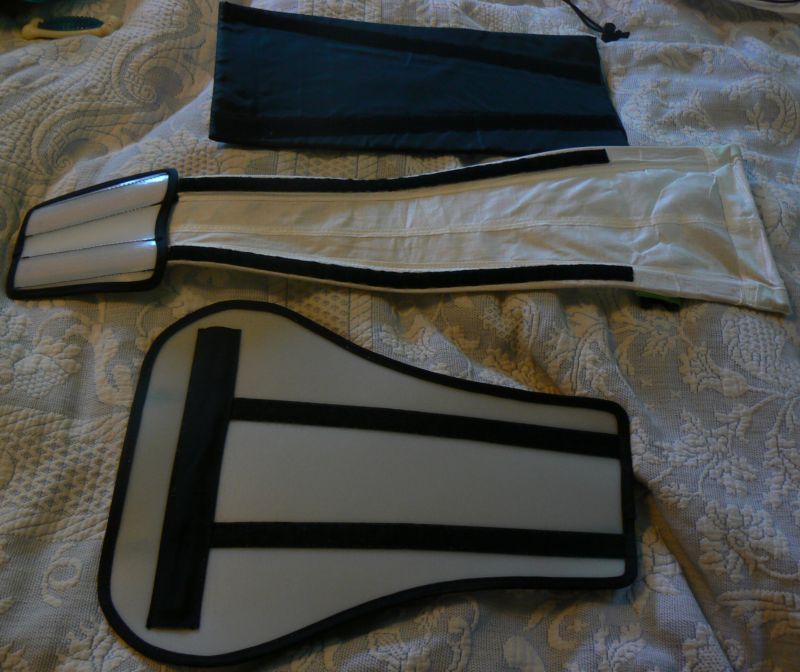
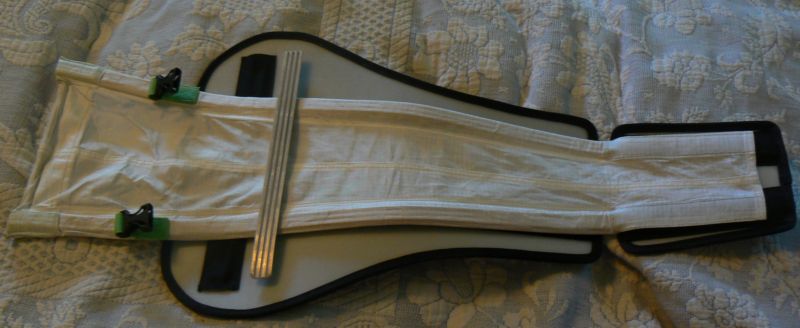
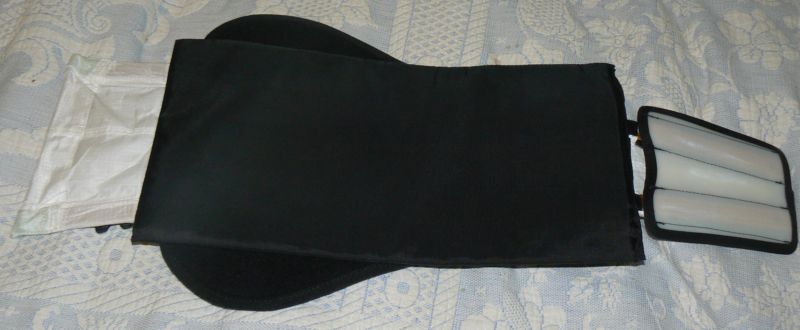
Here are the main pieces of the frame. On the top is a thin piece of foam padding with nylon around it, and velcro to secure it to the frame. This is not present, or is different on the rest of my 6500 packs. In the middle, is the main frame. On the bottom is the main HDPE sheet. This looks slightly different on each of my 6500 packs. The next picture shows the main HDPE sheet attached to the frame, and where the LightBeam crosspiece is attached to the frame. Once it is in, it is pretty difficult to remove, and it isn't required unless you are carrying heavy loads. Some other 6500 packs of mine don't have it. The last picture shows the foam padding attached to the frame.
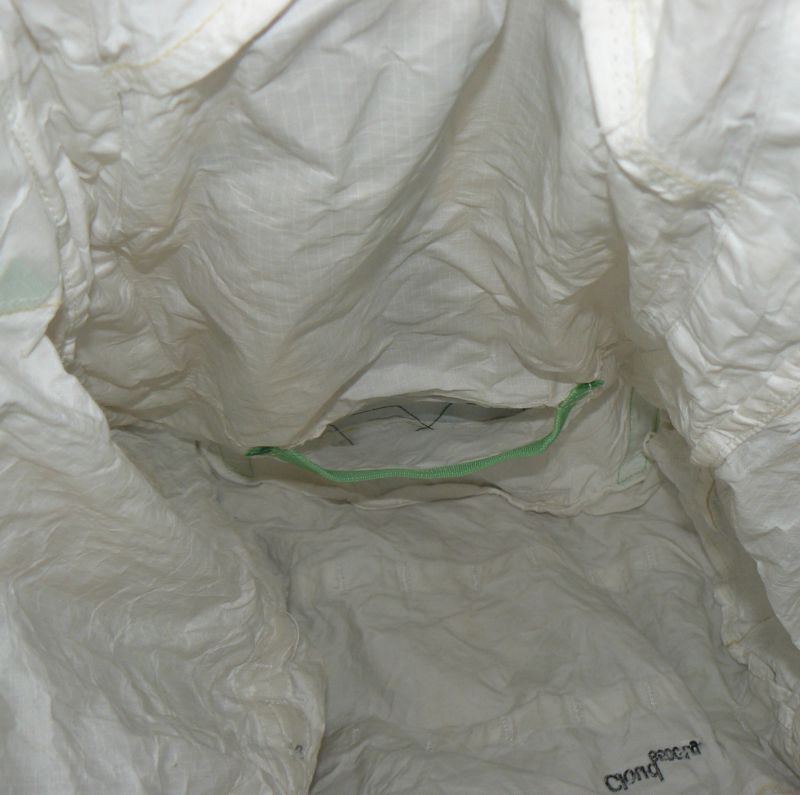
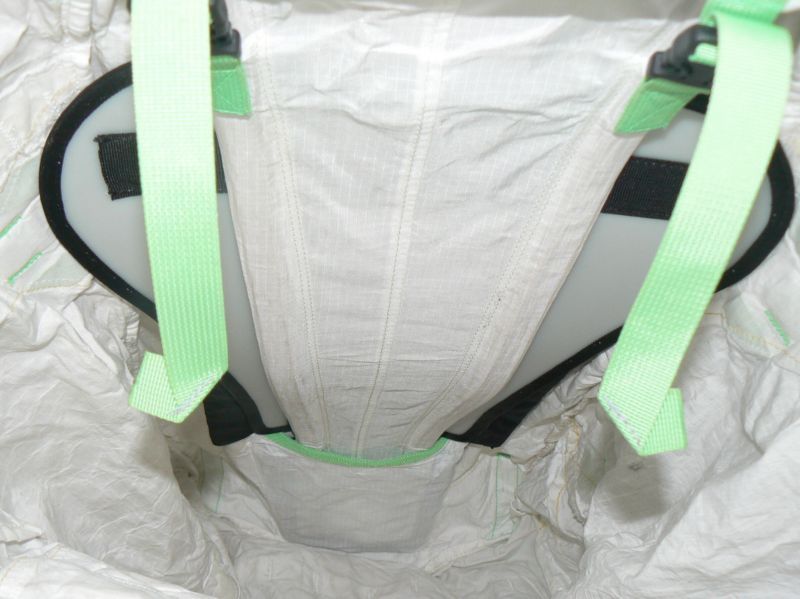
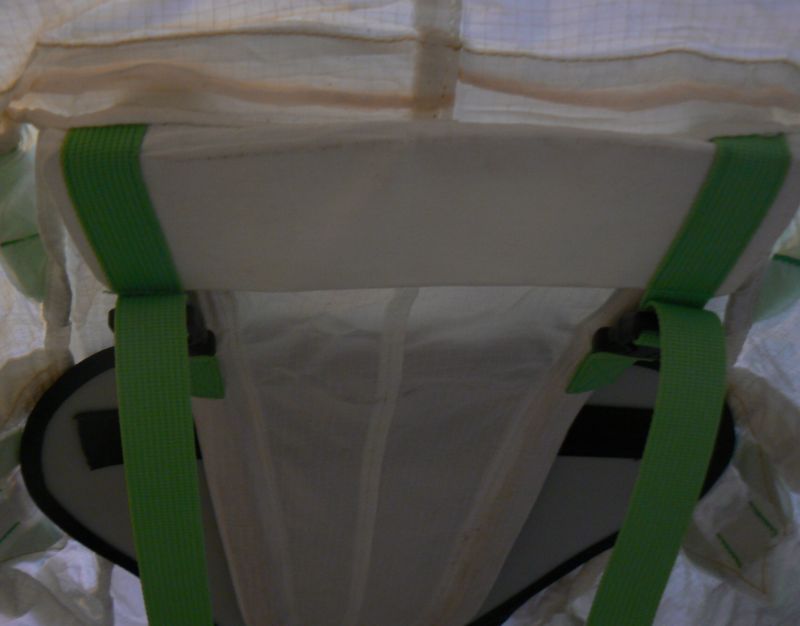
Here is a picture inside the pack, showing the pocket where the end of the frame attaches. The pocket is on the other side of the hip belt. The next picture shows the frame inserted in the pack, and secured with two straps. The last picture shows the flap that secures the top of the frame and the two clips and straps that hold the frame in place. I think this is a pretty secure and robust internal frame. It isn't as heavy as the McHale, nor as strong, but I suspect it is strong enough for almost all uses.
If you have comments or suggestions, Email me at turbo-www@weasel.com
Created with gnu emacs and template-toolkit, not some sissy HTML editor.
No Java or javascript needed to view my web pages. They
both have significant security issues.